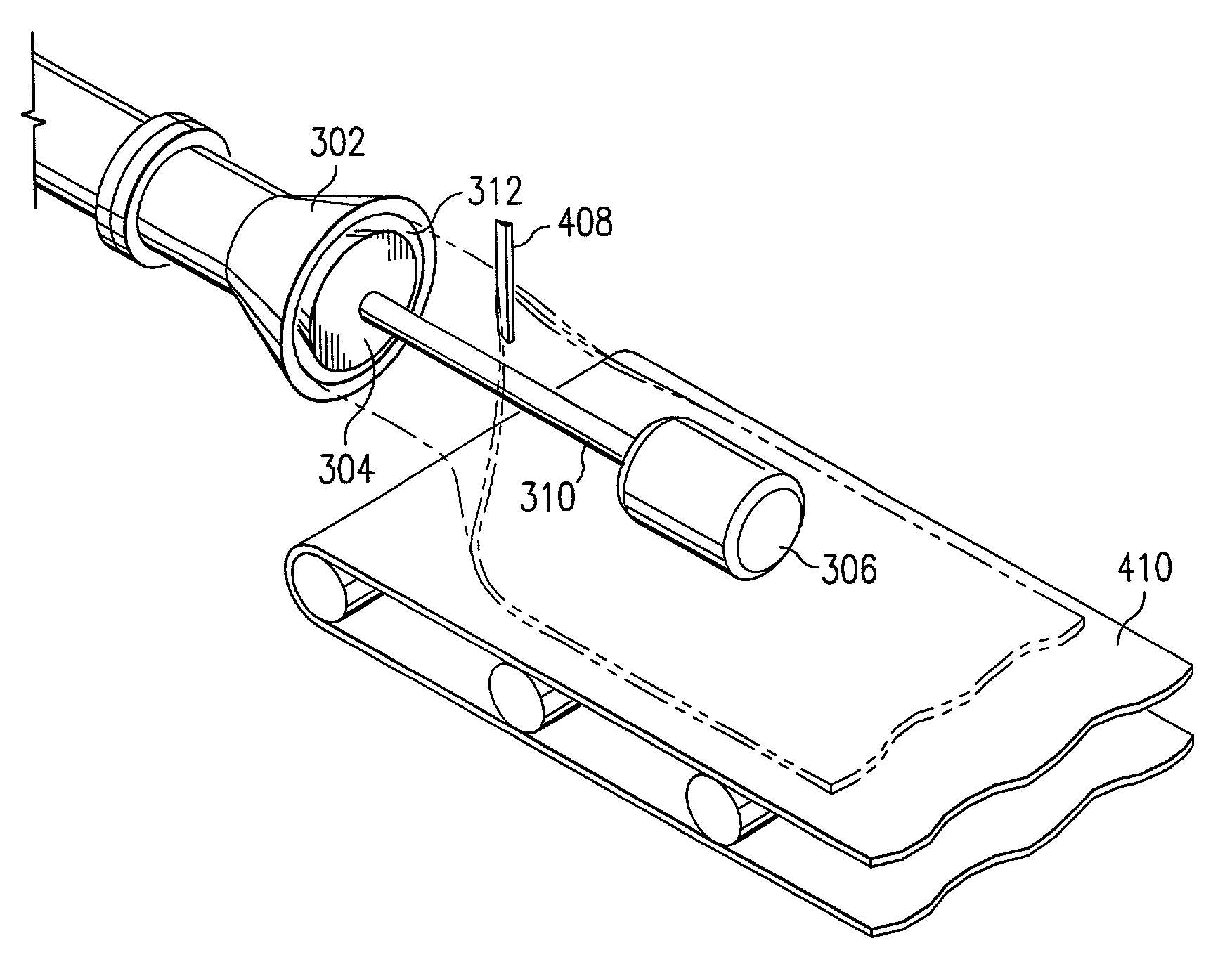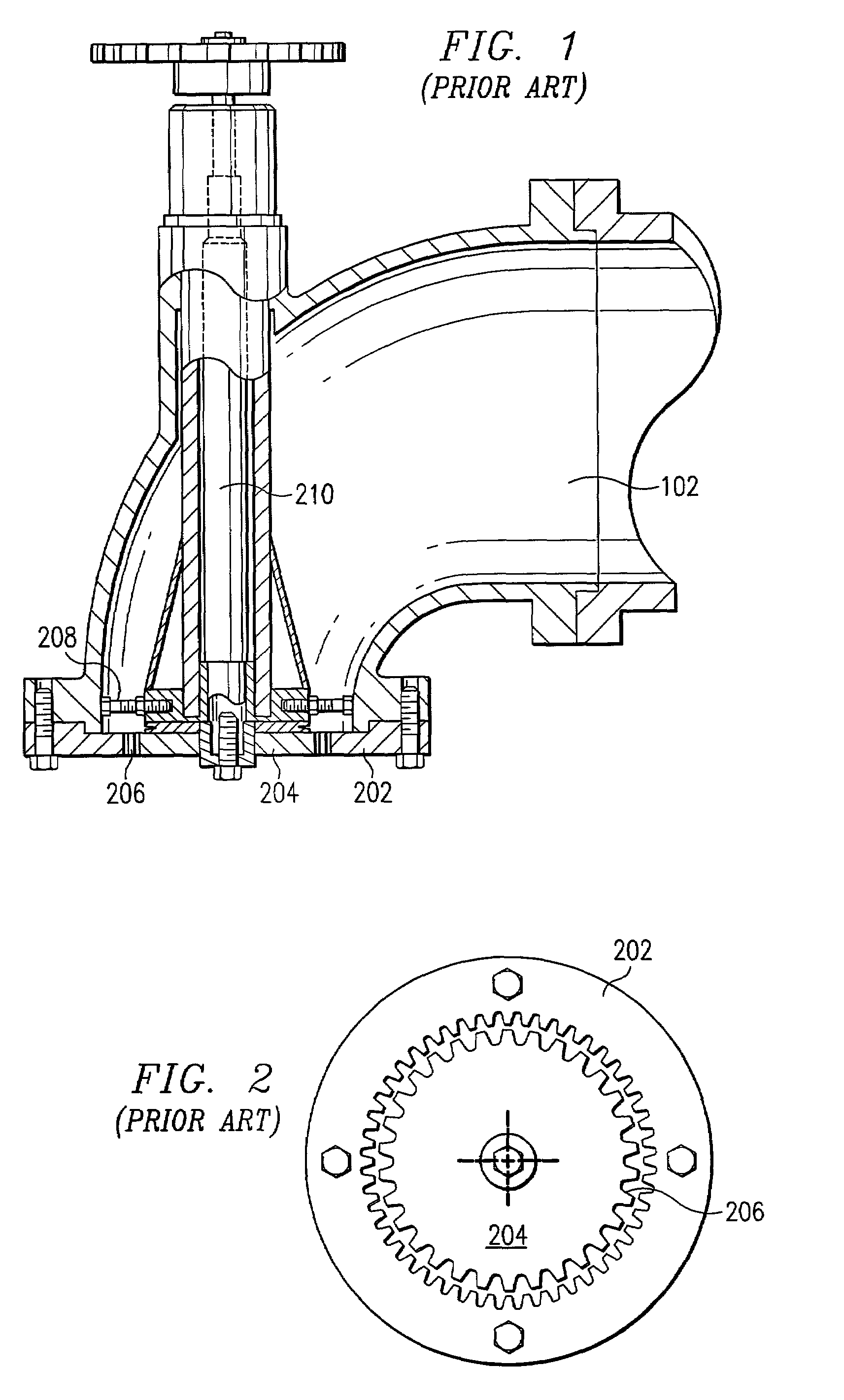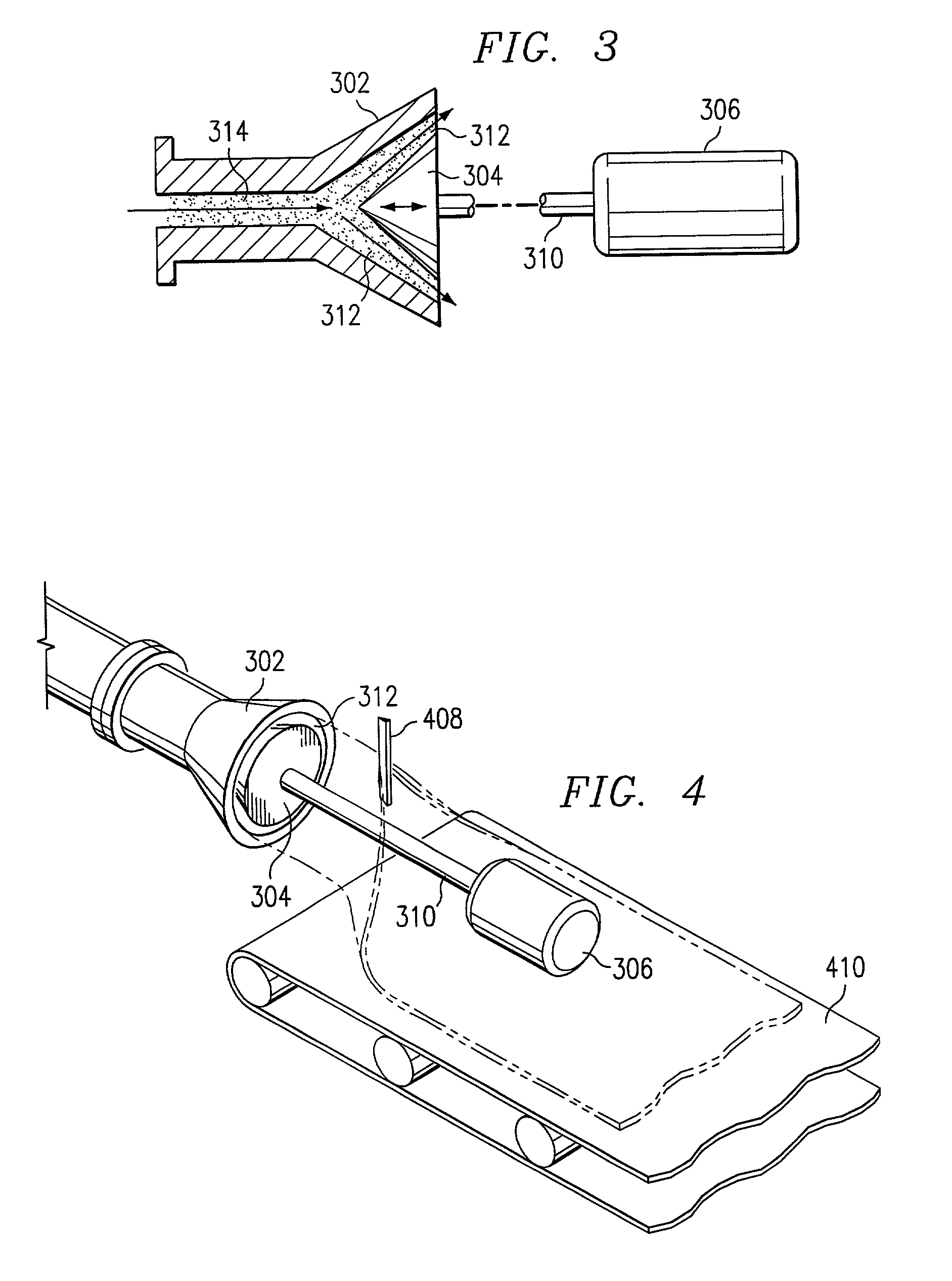Rotating circular die
- Summary
- Abstract
- Description
- Claims
- Application Information
AI Technical Summary
Benefits of technology
Problems solved by technology
Method used
Image
Examples
Embodiment Construction
[0024]FIG. 3 illustrates a schematic presentation of one embodiment of the present invention. The die assembly of the present invention comprises an outer die or component 302, with a generally conically shaped opening or exit port connected via attachment means to an extruder assembly (not shown), and the inner cone 304 nested in non-contact with the outer die 302, having its own support and drive assembly 306 outside the extruder. The die 302 and the cone 304 are positioned to form an annular channel 312. The outer die 302 is in fluid communication with an extruder by means commonly known in the art. Dough 314 is forced into the outer die 302, contacts the inner cone 304, and proceeds between the outer die 302 and inner cone 304 to the exit channel 312. Pressure and dwell time for the extrudate is equal around the circumference of the exit 312.
[0025]The inner cone 304 is connected to a support assembly via a shaft 310 and is capable of clockwise and counter-clockwise axial rotatio...
PUM
| Property | Measurement | Unit |
|---|---|---|
| Thickness | aaaaa | aaaaa |
| Force | aaaaa | aaaaa |
| Torque | aaaaa | aaaaa |
Abstract
Description
Claims
Application Information
 Login to View More
Login to View More - R&D
- Intellectual Property
- Life Sciences
- Materials
- Tech Scout
- Unparalleled Data Quality
- Higher Quality Content
- 60% Fewer Hallucinations
Browse by: Latest US Patents, China's latest patents, Technical Efficacy Thesaurus, Application Domain, Technology Topic, Popular Technical Reports.
© 2025 PatSnap. All rights reserved.Legal|Privacy policy|Modern Slavery Act Transparency Statement|Sitemap|About US| Contact US: help@patsnap.com



